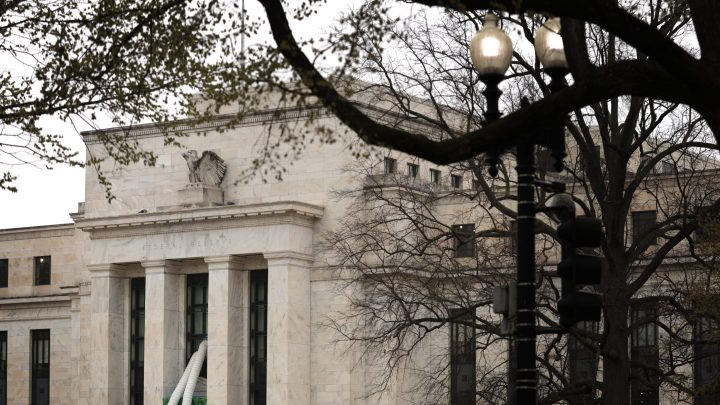
What do these high Treasury yields mean for the economy?
Share Now on:
What do these high Treasury yields mean for the economy?

Let’s start with a loan that has an interest rate of 4.81%.
Now, if you’re taking out a mortgage, buying a car or paying off a credit card, 4.81% is a killer bargain these days. But if you’re the federal government, not so much.
The yield on the 10-year Treasury note — that is the annual interest paid by the United States to borrow money for 10 years — reached 4.81% on Tuesday, the highest it’s been since 2007.
Thing is, when it gets more expensive for Uncle Sam to borrow money, that changes a lot of things in this economy.
You know how some workplaces do March Madness brackets or Academy Awards pools? Well, the fixed-income team at investment firm BlackRock has a version of that. At the beginning of the year, they try to forecast what the yield on the 10-year T-note will be on Dec. 31.
“I know what you’re going to ask next, I will admit it. I had predicted that 10-year yields would finish the year probably closer to 3%,” said Steve Laipply, who co-heads listed fixed-income funds for BlackRock.
Back in January, he thought the Fed’s fight with inflation would basically be done by now, and interest rates would be headed down.
Needless to say, Laipply won’t be winning.
“The Federal Reserve speakers have come out in chorus, and some of them have been quite hawkish in their statements that they may need additional hikes,” Laipply said.
When the Fed raises rates or investors think it’ll leave rates high for a while, yields on Treasury debt go up.
But Fed Chair Jay Powell is only part of the equation.
The market for Treasury debt is not immune to supply and demand, said Michael Cudzil with the investment firm Pimco.
“Supply is massive today,” Cudzil said.
Through the first 11 months of fiscal year 2023, the federal government ran a deficit of $1.5 trillion — which represents new debt that’s put into the bond market to find buyers. “These levels of debt are quite high,” Cudzil said.
And what do those investors want to get them to buy that debt? Higher yields.
But if you’re like, “Well, that debt is Congress’ problem,” Bill English at the Yale School of Management has bad news for you … and anyone who uses credit.
“So it’s going to be more expensive in terms of mortgage payments to buy a house, more expensive in terms of car payments to buy a car,” English said.
Because even though Congress is, well, Congress, global investors still think the U.S. government is a very safe place for their money.
That’s why the rate on the 10-year T-note is the benchmark for lots of other loans. If you’re going to borrow in those markets, you’re going to pay higher rates.
But English said it’s not all downside for U.S. consumers.
“Higher rates in the U.S. make dollar investments attractive, so the dollar becomes stronger, imports become cheaper,” English said.
A strong dollar also means a good time to travel abroad. Just don’t finance the trip with a credit card.
There’s a lot happening in the world. Through it all, Marketplace is here for you.
You rely on Marketplace to break down the world’s events and tell you how it affects you in a fact-based, approachable way. We rely on your financial support to keep making that possible.
Your donation today powers the independent journalism that you rely on. For just $5/month, you can help sustain Marketplace so we can keep reporting on the things that matter to you.

















